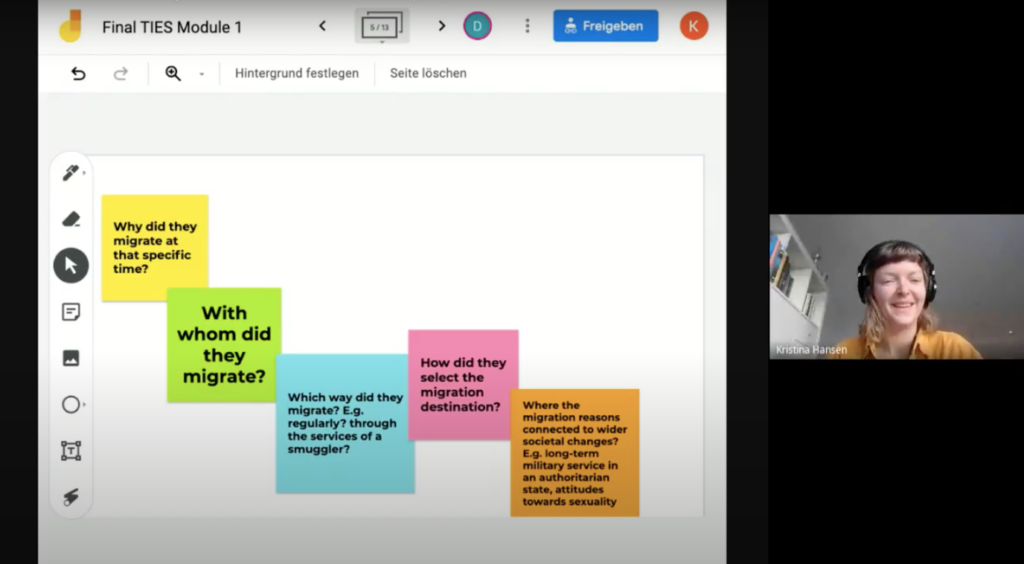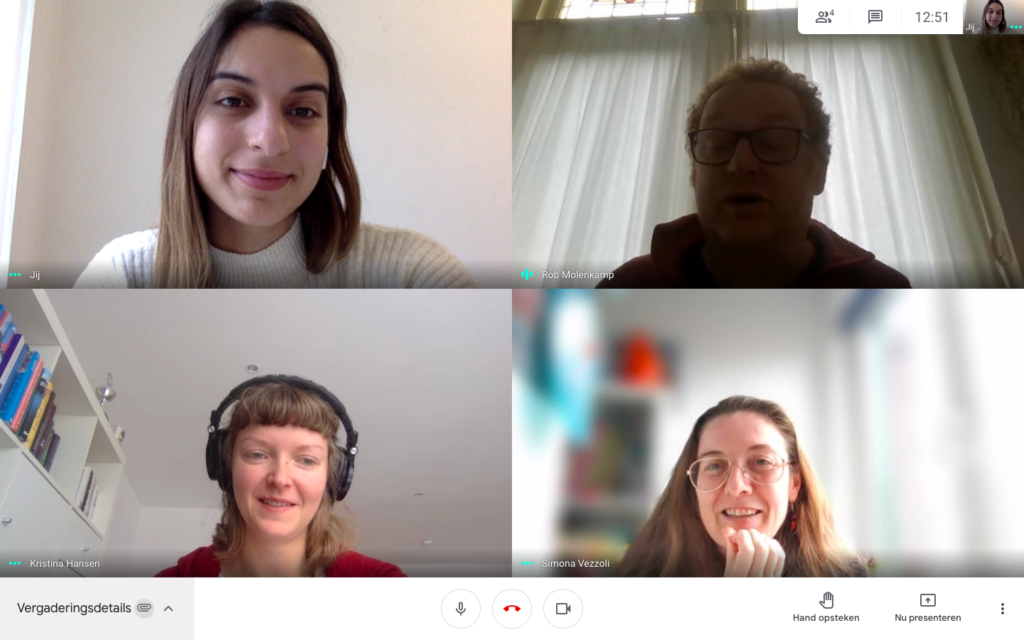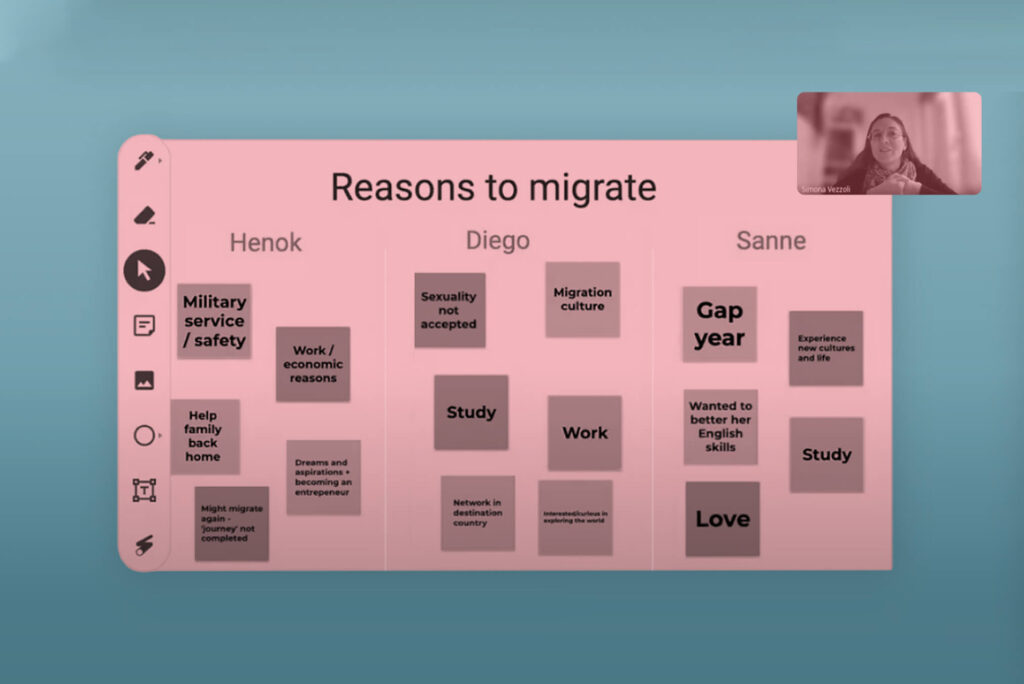In February, we had the opportunity to test our first teaching module, Drivers of Migration, with a group of secondary school students in Amersfoort, near Utrecht. We were very excited to run a pilot of our first teaching module as we needed feedback from students and teachers to improve the teaching module and to evaluate the validity of the overall approach taken by the TIES team. Although both the development and the execution of the module was a bit different than we had envisioned in the early stages of the TIES-project, it turned out to be a great success! In their feedback, students shared that they learned about migration in a refreshing and interactive way. At the same time, students also shared valuable suggestions on how we can make the TIES teaching modules even better.
In this blogpost we will walk you through our experience of developing and teaching in COVID-19 times.
Partnering with the school
In November last year, we reached out to Rob Molenkamp, a Civics (Maatschappijleer) teacher at the Vathorst College in Amersfoort, in the Netherlands. After introducing the TIES project to him, he readily agreed to do an interview during which we discussed the various ways to teach migration in the classroom and how TIES can best facilitate this. With his background in Theology and 25(!) years of teaching experience in secondary schools, Rob shared many interesting insights on creative approaches to teaching migration and how the topic of migration could fit in the current curriculum. What interested Rob in particular was to teach his students about migration before teaching them about Civics key concepts such as culture, identity, integration, socialisation and the pluralistic society. In his experience, students are expected to already have basic knowledge of migration prior to these lessons, but this was not always the case. Rob felt that this was a gap that our Drivers of Migration module could fill. Moreover, in line with Vathorst College’s educational philosophy on adaptive and student-centred-learning, Rob wanted to teach his students about migration through context-rich learning and by providing them with experiences, which the Drivers of Migration module promised to do.
Together, we decided to test the Drivers of Migration module in a ‘guest lecture’ format for Rob’s four Civics courses (HAVO 4) at Vathorst College.
Developing a teaching module in uncertain times
Rob’s reflections on teaching migration and teaching methods in secondary schools provided inspiring information that made us look critically at our teaching modules and the possible teaching and learning experiences that TIES could provide. We also faced an additional challenge: while the teaching modules have been conceived for on-site teaching, a couple weeks before our school visit, the Dutch government imposed new lockdown measures. One of these measures was to close all schools and switch to online teaching. Our teaching module became suddenly impracticable, because it wasn’t suitable for online teaching. As shown in our first blogpost, the TIES project has adapted to different COVID-19 measures before. So, while the new lockdown measure was unfortunate, it certainly didn’t hold us back from continuing our work.

Together with Rob, we discussed our limitations and options with online teaching. In a matter of weeks, we completely changed the format of our teaching module: first of all, we shortened the length of the module, without leaving out essential information. Second, we embarked on a steep learning curve of possible online teaching platform that could help us accomplish our learning goals. Eventually, after some frustration, we managed to work our way through Google Meet and Jamboard. Third, we discussed creative ways to engage the students in a setting where they have to watch their computer screen for 60 minutes. Lastly, we collaborated with Rob and some adjustments to tailor the module to meet Rob’s requirement for a follow-up student assignment. As part of the brainstorming sessions we held to modify the module, Kristina even created a bonus soundscape assignment for motivated students who wanted to earn extra credits!
Within a couple of weeks, we adapted our teaching module to meet the requirements of an online setting, without reducing its interactive and engaging characteristics. We were ready to go!
Delivering the module as a ‘guest lecture’
With the enormous support and flexibility of Rob, we were able to offer our teaching module to four different senior (HAVO 4) classes. Our first class was on a Tuesday morning. The module required the students to read three migrant narratives and to reflect upon a set of questions ahead of class. In class, we could easily guide the students through a short quiz, a brief discussion based on the answers to the pre-assigned questions and guide the students through a critical thinking process on the dynamics of migration. To change the pace and stimulate students’ reflections on their own connections to international migration, we used a soundscape-exercise.
Despite the fact that it was 9 AM in the morning, all students actively participated in the teaching module. They weren’t shy to ask us questions about migration and they enthusiastically shared their thoughts and experiences during the exercises. However, some of the smooth running of the lesson was affected by the fact that the module was taught in English and, while the students had good command of English and they were notified in advance that the teaching language was English, some students felt uncomfortable expressing their thoughts in English. Dunja made sure to answer any students’ questions and offer translations in Dutch, which enabled a good discussion and reduced the effects of the language barrier.
The other three classes were held on Friday and they were taught in Dutch by Dunja and Rob as co-teachers. Similar to the previous class, the dynamic between the teachers and the students was energetic, and the students were very engaged during the exercises.

After the first class on Tuesday and after the three additional classes on Friday, we rounded up with a discussion with Rob to discuss his insights and evaluation of the lessons. It was very rewarding to reflect on the positive experiences and outcomes of our pilot and also to receive practical suggestions for improvements, as to make the TIES modules as valuable as possible for both students and teachers. We are thrilled to report that the students gave the module positive feedback. They appreciated our interactive approach and creative exercises and they complimented us on our own enthusiasm. Moreover, students appreciated how the TIES ‘Drivers of Migration’ teaching module corresponded to the content of their schoolbooks. This enabled them to readily connect the material they already learned to practical cases for further reflection and deeper learning. Students also reflected positively on how the module encouraged them to relate the topic to their personal experiences, bringing to topic to life. On the downside, students commented on the challenges of online teaching, particularly its effects on their attention-span.
Overall, we think it’s safe to say that this was an exciting, educational and rewarding experience for all of us. We’re very pleased with the valuable insights gathered from this pilot and would like to thank Rob and his students for this opportunity!

